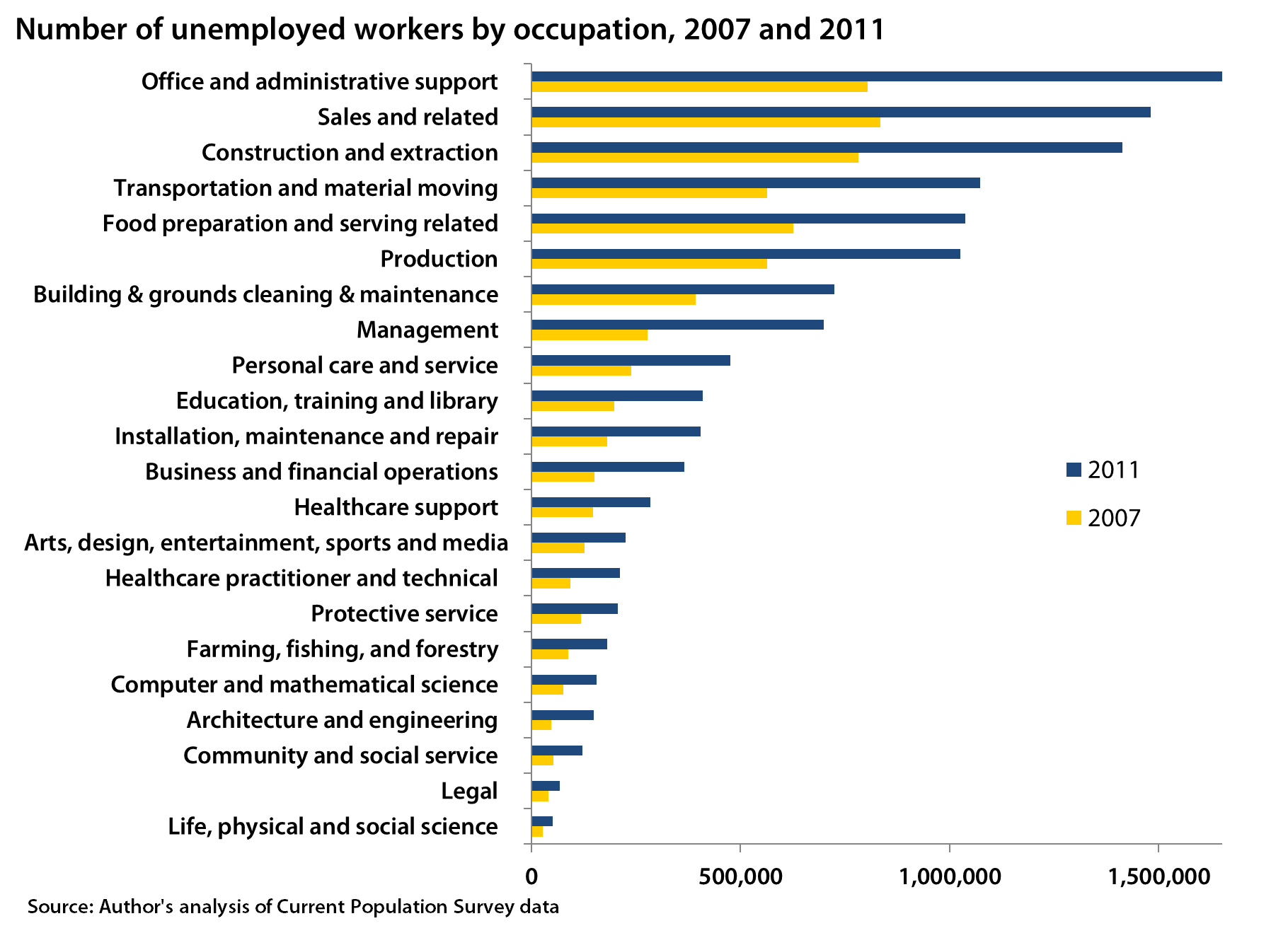This piece originally appeared on U.S. News & World Report’s website
We often hear that today’s high unemployment is being primarily driven by workers who were laid off from construction jobs, but it’s not true. It is true that the bursting of our $8 trillion housing bubble meant an enormous loss of construction jobs and that unemployment in construction is severe. But the bursting of the housing bubble didn’t just cause home builders to radically downsize after overbuilding during the bubble. It also caused a massive drop in demand for goods and services (and therefore a drop in the demand for workers) due to households pulling back on spending because of the loss of wealth due to declining home values, and businesses cutting back on investments in plants and equipment because of a lack of demand for their goods and services. The drop in demand for workers was therefore widespread—which means that today’s unemployment problem is not at all limited to construction.
My colleague Larry Mishel has recently discussed this here and here. The figure below shows the number of unemployed workers by occupation in both 2007 and 2011, and it shows that there has been a large increase in unemployment across all occupation categories, not just construction. The category with the smallest percent increase in unemployment is Food Preparation and Serving, and even in that category there were nearly 70 percent more unemployed workers in 2011 than there were in 2007. In most occupations, including construction, the number of unemployed workers roughly doubled between 2007 and 2011. One thing this demonstrates is that the skills of laid-off construction workers appear to be at least as well-matched to the available jobs as laid-off workers in other occupations (for more on this, see this paper).
The other thing this underscores is the fact that, as I’ve said before here and here, today’s unemployment problem is not limited to particular industries or occupations or types of workers, but instead reflects a broad-based lack of demand for workers. This could be very good news because we have effective tools to stimulate demand during times when there are massive idle resources (at a time like today when interest rates are near zero, fiscal support is the most effective tool and would include things like fiscal relief to states, infrastructure, and school modernization projects, temporary expansion of the safety net, and direct jobs creation programs in particularly hard hit communities). The fact that we are not aggressively pursuing fiscal policy to generate demand is a choice we are making. We are choosing to forgo spurring a fast recovery and instead allow the unemployment rate to remain greatly elevated, needlessly condemning individuals and families to job loss and unemployment for years to come.

